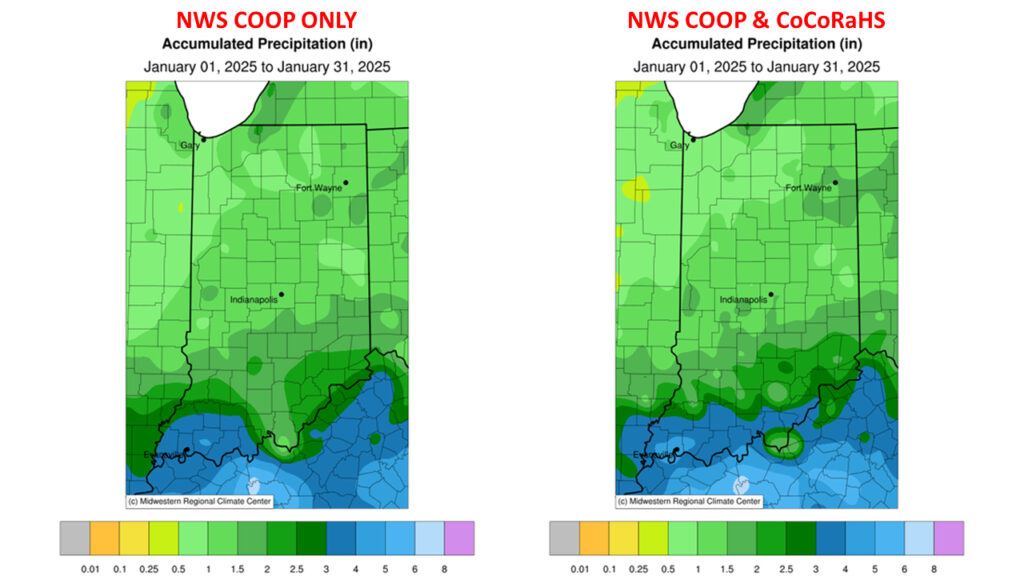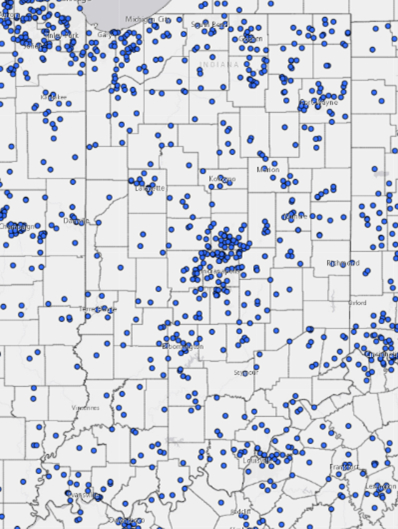How often have you heard that your neighbor received rain while you missed it? Precipitation is highly variable and has significant impacts on communities. Insufficient rainfall can cause drought and water supply issues, while excessive rain can lead to flooding and damage to infrastructure. The dense precipitation measurements provided by the Community Collaborative Rain, Hail, & Snow (CoCoRaHS) Network, a national volunteer precipitation observation network, are essential for Indiana’s well-being.
The Indiana State Climate Office (IN-SCO) collaborates with the National Weather Service (NWS) to coordinate Indiana’s CoCoRaHS network via monthly newsletters, quarterly meetings, and the recruitment and retention of volunteers. Rain or shine, volunteers measure precipitation and report their findings to the CoCoRaHS headquarters each morning. CoCoRaHS plays a crucial role in providing high-quality precipitation data, helping to bridge gaps in data between the NWS Cooperative Observer Network, airport weather measurements, and the Purdue Mesonet. Let’s quickly examine how CoCoRaHS precipitation observations fill the gap.
In January, Indiana received 1.47 inches of precipitation, which was 1.48 inches below normal and accounted for only 50 percent of the usual amount. Heavier precipitation was observed in southern Indiana, while northern regions experienced significantly lower totals (Figure 1). The addition of CoCoRaHS measurements highlighted notable differences in southern Indiana, particularly in Harrison, Crawford, Floyd, and Clark Counties. Areas in northern Indiana, especially Fort Wayne, showed broader regions with higher precipitation totals when CoCoRaHS data were included. Drought conditions showed improvement throughout January, thanks to above-normal precipitation in December. However, this improvement was followed by January precipitation levels in the northern two-thirds of the state that were 1.5 to 2 inches below normal. As a result, abnormally dry conditions have expanded from northern Indiana to just south of Indianapolis. CoCoRaHS has helped the IN-SCO stay on top of the ever-changing drought conditions.

Figure 1. Left – January 2025 accumulated precipitation from NWS COOP network only. Right – January 2025 accumulated precipitation including both NWS COOP and CoCoRaHS.
We continually need new CoCoRaHS observers to help fill the gaps (Figure 2); as the saying goes, “the rain doesn’t fall the same on all.” In March, CoCoRaHS is hosting its annual Rain Gauge Rally, a contest to see who can recruit the most new volunteers. Indiana always gets beat by Minnesota, but we’re proud of the 61 new observers we recruited last March. This helped push us to a record 185 new observers in 2024, a number we hope to expand upon in 2025.
